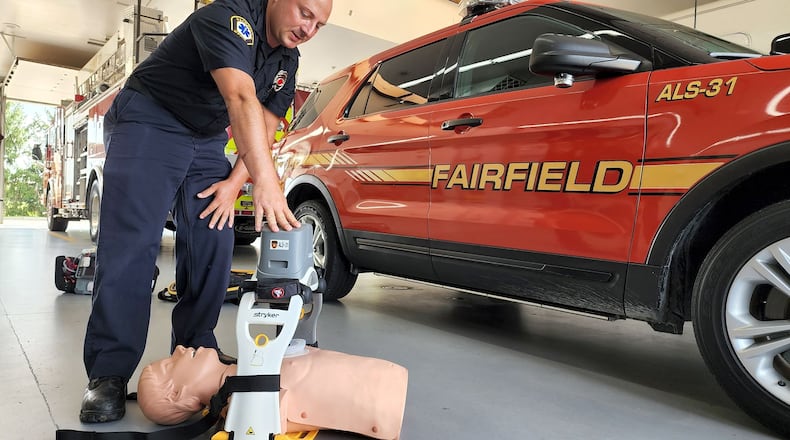“Between fire and police, we take up a big portion of the capital budget,” said acting fire Chief Tom Wagner. “We’re able to provide a higher level of advanced life support service without impacting the city’s general fund, and then money can be freed up for another department within the city to perhaps purchase something.”
Though the purchase isn’t related to the transition of the Fairfield Fire Department moving from a combination to a professional department, Wagner said at some point, all of the firefighters will be paramedics. While EMTs are able to use the LUCAS device, which provides “perfect CPR” compressions at consistent time intervals, the Lifepak-15 can only be used by paramedics when doing a 12-lead diagnostic.
Credit: Nick Graham
Credit: Nick Graham
“As the department transitions into full-time, and we have 100% paramedic staffing, it’s just going to result in more knowledgable employees that are responding on runs,” Wagner said.
The purchase still needs City Council approval, which Wagner said the request will be made at the board’s next meeting in September. Once the $192,900 purchase is made, pending the council’s approval, the 90% grant will be reimbursed by FEMA. It could take six months for the devices to arrive, the chief said.
The purchase of three LUCAS devices would give the city department five. The two Fairfield owns are on the department’s two ALS vehicles, and the three new ones will be on the department’s medic units, M31, M32, and M33.
Credit: Nick Graham
Credit: Nick Graham
The three new Lifepak monitors will be installed on the three medic units, and the older models will be on Engine 33, Quint 32, and the reserve ambulance, Medic 34.
The major difference between the 3-lead EKG and the 12-lead is the amount of cardiac information provided to the paramedics. While the 3-lead EKG monitors two areas of the heart, the 12-lead looks at the heart’s three areas as it “can definitively tell where something is occurring.
And all that information can be transmitted to emergency rooms on the way to the hospital.
“If someone is having a heart attack, it’s important we capture it as soon as we can, and then we immediately transmit that 12-lead (report),” said Wagner, adding that it’s also good to capture any cardiac tests results before arriving at a hospital as “time in cardiac care is muscle.”
“It’s good that we can capture that, it’s good that we can transmit it right away so the hospital is getting the clearest picture of the patient that they can in the shortest amount of time,” Wagner said.
About the Author



